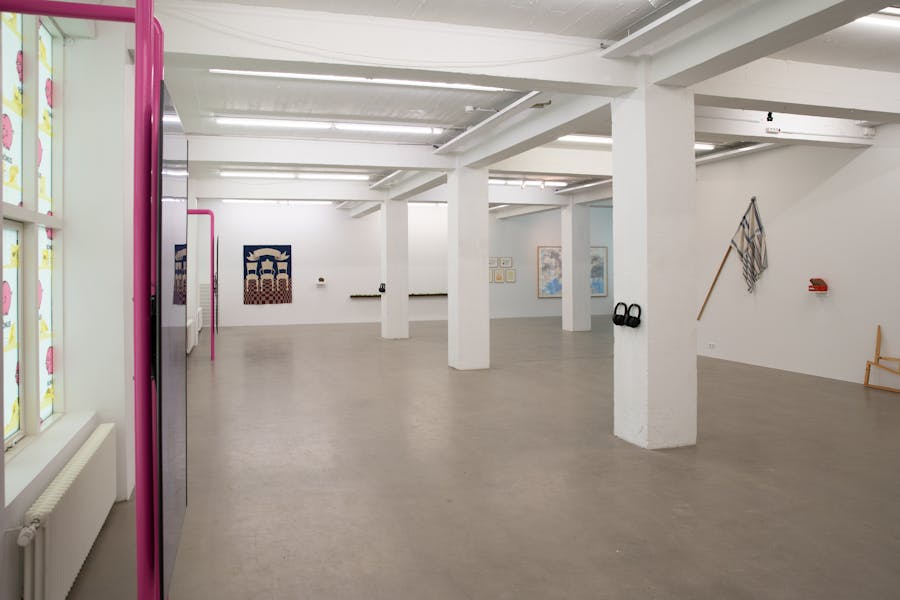Guided tour in Icelandic sign language

Bryn Nóel Francis, a graduate in Sign language and Deaf Studies and masters student in Art Theory will take on a signing guided tour of the exhibition Why is Iceland so poor? in Icelandic sign language. It will be on the 2nd of March at 2pm. The tour is a collaboration with the exhibitions curator, Odda Júlía Snoradóttir and The Living Art Museum.
“Why is Iceland so poor?” asks artist Sæmundur Þór Helgason in a new work exhibited at The Living Art Museum in dialogue with selected works from the museum's collection. The aesthetics of the exhibition are inspired by the graphic identity of Bónus, a chain of grocery stores that was originally founded to provide their customers with the lowest possible food prices.
“Why is Iceland so poor?” surfaces the concerns of the nation today, while simultaneously considering it as part of ongoing conversation on the lived experience of Icelanders. Amongst Sæmundur’s work are different artworks from The Living Art Museum’s collection, meticulously chosen in correspondence to the answers of Helgason’s interviewees. The selection proves that poverty, contrary to the image-production of the nation, has deep roots into Iceland’s society. These works and these answers serve as an open forum on wealth and its unequal division in society today.
Bryn Nóel Francis, a graduate in Sign language and Deaf Studies and masters student in Art Theory will take on a signing guided tour of the exhibition Why is Iceland so poor? in Icelandic sign language. It will be on the 2nd of March at 2pm. The tour is a collaboration with the exhibitions curator, Odda Júlía Snoradóttir and The Living Art Museum.
“Why is Iceland so poor?” asks artist Sæmundur Þór Helgason in a new work exhibited at The Living Art Museum in dialogue with selected works from the museum's collection. The aesthetics of the exhibition are inspired by the graphic identity of Bónus, a chain of grocery stores that was originally founded to provide their customers with the lowest possible food prices.
“Why is Iceland so poor?” surfaces the concerns of the nation today, while simultaneously considering it as part of ongoing conversation on the lived experience of Icelanders. Amongst Sæmundur’s work are different artworks from The Living Art Museum’s collection, meticulously chosen in correspondence to the answers of Helgason’s interviewees. The selection proves that poverty, contrary to the image-production of the nation, has deep roots into Iceland’s society. These works and these answers serve as an open forum on wealth and its unequal division in society today.

